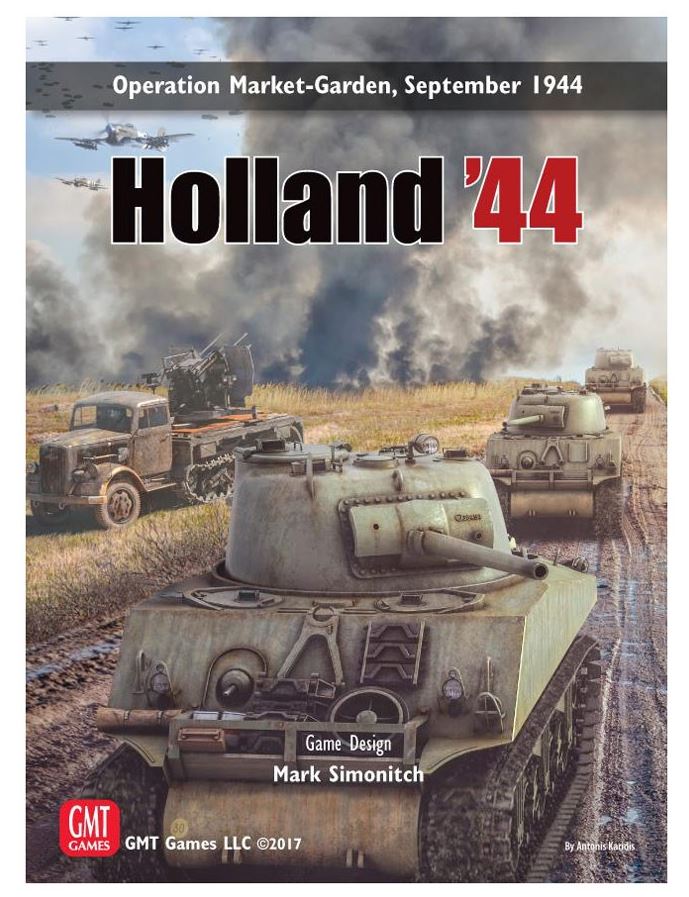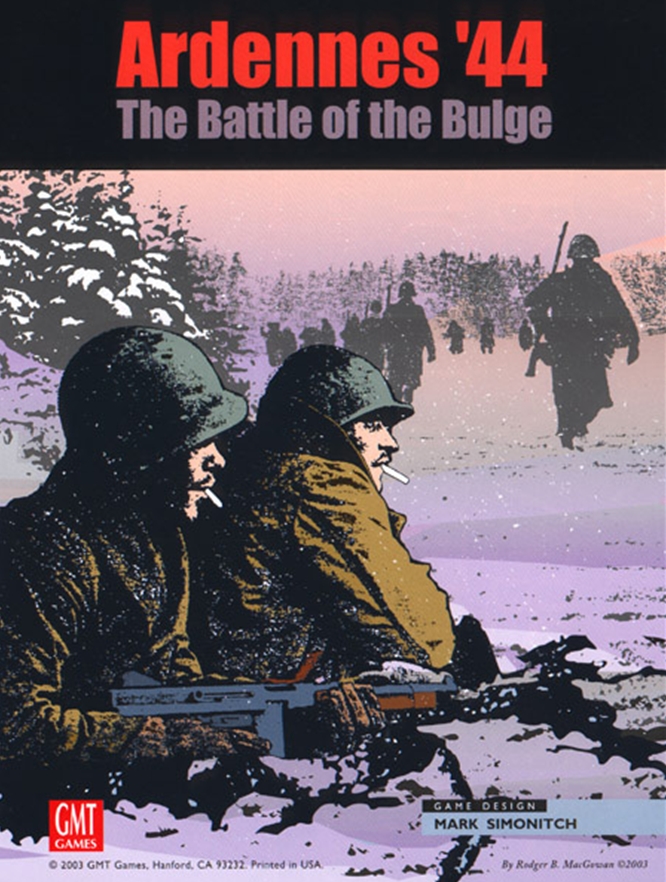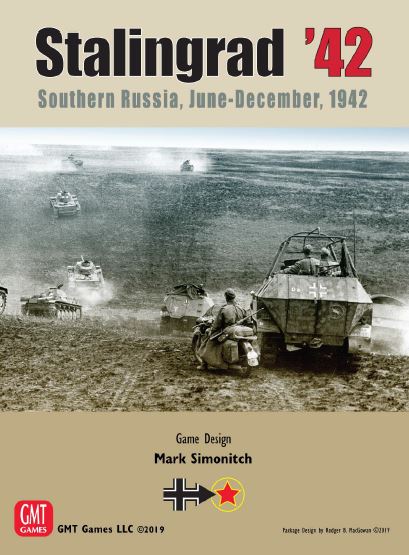It’s dark, cold, snowy, and you’re spread thin with enemy armor on the way. Normally, the makings of a bad day, but this time your squads are peppered between hills and trees, rivers and rough terrain. Sure, there’s some space between your guns, but if the enemy tries to take it, they’ll be stuck and ripe for a reckoning. As dawn breaks, you crack a smile, because the rules are in your favor. Those are Zones of Control.
reckoning. As dawn breaks, you crack a smile, because the rules are in your favor. Those are Zones of Control.
Created by Mark Simonitch, a legendary wargame designer who’s been crafting conflicts for decades, the ZOC Bond Series employs a unique zone of control (ZOC) mechanism in which units not only affect the hexes immediately around them, but also coordinate with nearby units to create an impassable ‘bond’ between their hexes, allowing for more dynamic interaction with terrain, formations, and clever play. These titles tend to deploy swaths of counters, zooming out to a division level and tasking you with making sweeping offensives, flanking, and tactical pushes to exploit breaches in defensive lines.
If you’re looking to ‘level up’ your wargaming from more compact titles to bigger games that present an epic, flexible scope, the ZOC Bond Series is your next stop for grand wargaming fun.
What is this ‘Zone of Control’ anyway?
Simonitch doesn’t change what isn’t broken, and the wargames in this series tend to follow a classic ‘I go, You go’ structure for marching your tanks, troops, and artillery across the map. You’ll aim for objectives based on the scenario, whether that’s breaking through the snowy woods in Ardennes ‘44 or crawling onto Italy in Salerno ‘43. Taking those objectives, if you can, is less a matter of pure dice chucking and more getting a smart read on the situation.
 CRTs and various tables abound in these games, not as random excuses to throw a die but rather as scaffolding to support the simulation and give both players a feel for how these battles really went. In Salerno ‘43, for example, we’re given an invasion table, upon which your friendly Allies must rely to see whether their boats made it to shore or capsized amid the waves. The true result will likely be somewhere in between, but spread across your entire force, will push Germany to make adjustments. An amphibious assault with a good chunk suddenly sleeping with the fishes might invite a risky, winner-takes-all assault, while a cleaner landing could push Germany to use those zones of control and terrain defenses to slug it out.
CRTs and various tables abound in these games, not as random excuses to throw a die but rather as scaffolding to support the simulation and give both players a feel for how these battles really went. In Salerno ‘43, for example, we’re given an invasion table, upon which your friendly Allies must rely to see whether their boats made it to shore or capsized amid the waves. The true result will likely be somewhere in between, but spread across your entire force, will push Germany to make adjustments. An amphibious assault with a good chunk suddenly sleeping with the fishes might invite a risky, winner-takes-all assault, while a cleaner landing could push Germany to use those zones of control and terrain defenses to slug it out.
Then again, what looks obvious invites the opportunity for surprise.
What makes the zone of control element of all this enticing is the way linking those zones presents tasty tactical decisions for both sides. As the defender, you can use fewer units to wall off dangerous routes thanks to the covered gaps between your counters, concentrating forces where you need them most. Attackers could pounce, as a lone unit makes for an appealing punch-through target, where a couple rough rolls could open a gaping hole in the enemy’s line. The effect is dynamism, rather than stolid lines slugging dice-driven haymakers at one another.
In fact, you’ll often have better options than blindly charging into combat. Most of the titles in this series offer all sorts of unique ways to engage in the titled battle, whether that’s by blowing bridges in Market Garden’s Holland ‘44 or the aforementioned Invasion mechanic for Salerno ‘43. These bits and bobs add realism and crunch, both alleviated by GMT’s solid production, with player aids and clear graphics aplenty.
All that said, if you’re looking to pick these up, be aware this series is best approached with some hex-and-counter experience under your belt (or a willingness to push through thick rulebooks). If you’re willing to trial and error some on your own, though, these games make for fun solo exercises, without hands of cards and hidden orders to manage. Whack out a few turns on your own to familiarize yourself, and you’ll be good to go getting your play partner up to speed.
Your First Zone of Control Bond Series Game
I’d normally suggest, when picking a wargame, to choose the theater or time period that most interests you and your gaming group. With the Zone of Control Bond series, though, you’re going to be playing during World War Two, though within that voluminous setting, you have options ranging from the Ardennes woods, the Italian peninsula, North Africa, and Russia.
The latter, with its snowy expanses, offers a stirring introduction to the ZOC Bond system with Stalingrad ‘42. The broad maps give you ample space to experiment with forming defensive lines to keep the Germans from rolling through, while the Axis player must stay focused on taking objectives without  getting spread too thin. Turn time pressure coupled with an aggressive combat resolution table (CRT) quickly turns pristine forces into the walking wounded, tasking both sides with difficult decisions. If Germany falls too far behind in its scoring, the campaign can wind to a soggy end and a Soviet victory, much like the real battle.
getting spread too thin. Turn time pressure coupled with an aggressive combat resolution table (CRT) quickly turns pristine forces into the walking wounded, tasking both sides with difficult decisions. If Germany falls too far behind in its scoring, the campaign can wind to a soggy end and a Soviet victory, much like the real battle.
What makes Stalingrad ‘42 a solid starter for this system is its varied scenarios, the lack of overly complex terrain, and a full campaign that’s both balanced and grand. That last bit, once you’re past the initial learning curve, is key. You’ll be able to bring Stalingrad ‘42 back to the table time and again, leaping at different strategies as either side. The length isn’t short, but it’s not The Campaign for North Africa either, and with the VP scoring schedule within easy reach, you won’t get stuck playing through a lost cause because the end isn’t clear. Gaming time is precious, and titles, particularly ones this large, that respect it are worth your respect in turn.
On the slimmer side sits the brand new France ‘40 second edition, with an updated rules set, more compact maps that’ll actually fit on your table, and two scenarios that serve as appetizers to the combined campaign. France ‘40 halves Stalingrad ‘42’s play time, making it a game you can expect to finish on a snowy Saturday afternoon, or even swap sides and run back if you have enough coffee. Compared to some of the older ZOC Bond titles, France ‘40 also comes in at an appealing price point, making it an easy pick-up if you’d like to try the system out.
After those two, with a grasp of the rules, dashing into battles like North Africa ‘41 and Holland ‘44 is an easy proposition, and fulfills one of the best parts about wargaming: once you have a foothold in a system, you can jump into different games with little onboarding and get right to the good parts. All told, there’s plenty of titles in the ZOC Bond library and all are worth giving a spin.
Oh, Hi Mark (Simonitch)
While the ZOC Bond system is a toothy maw of carnage worth digging into, Mark Simonitch has a whole slew of other games that’re worth your time. As is often the case with wargames (and boardgames in general), playing any of Simonitch’s titles will give you a taste of his style, all while branching beyond  World War Two’s gas and guns confines.
World War Two’s gas and guns confines.
First, Hannibal: Rome vs. Carthage. This game’s received a number of different editions over the years, the most recent being 2018’s Hannibal and Hamilcar, but all versions revolve around playing strategy cards to do all the wonderful things one did in political and physical wars of that ancient era. You’ll sail across the Mediterranean, cajole the Senate in Rome, and maybe march those elephants over the Alps. The latter productions are beautiful, but any and all will provide a gripping duel. Along the same lines, the more recent Caesar – Rome Vs. Gaul will get you similar feels in Rome’s northern edges.
Or you could go big, with the aptly named The U.S. Civil War. Whereas most of the titles above, and even Hannibal, cover single battles or smaller swaths of territory, The U.S. Civil War gives you all of it. A whole map of the southeastern US, a campaign scope covering the entire war (every turn is three months, broken into several action phases), and an alternating activation structure keeping pace with the breadth of the conflict. Even so, The U.S. Civil War won’t bury you in counters nor demand a single game stretch for months at a time. There are so many great games covering this time period, like the one we talked about recently, For the People, and if you’re looking for a bigger, bolder Civil War-era wargame, The U.S. Civil War should be near the top of your list.
Building Your Wargaming Fundamentals
Like picking up deck building or worker placement with eurogames, digging into a system like Zone of Control Bonds provides a framework for numerous great wargames. You’ll already have a basic idea of strategy and rules, easing the way into some of wargaming’s most iconic games. Salerno ‘43’s amphibious assault and Stalingrad ‘42’s wide open, frantic series of gambits make for special duels, all crafted by a master, to say nothing of the other great games in this line.
In short, if you bleed hex and counter, or want to give a big, bold wargame a shot, this is a series worth getting on your shelf.
